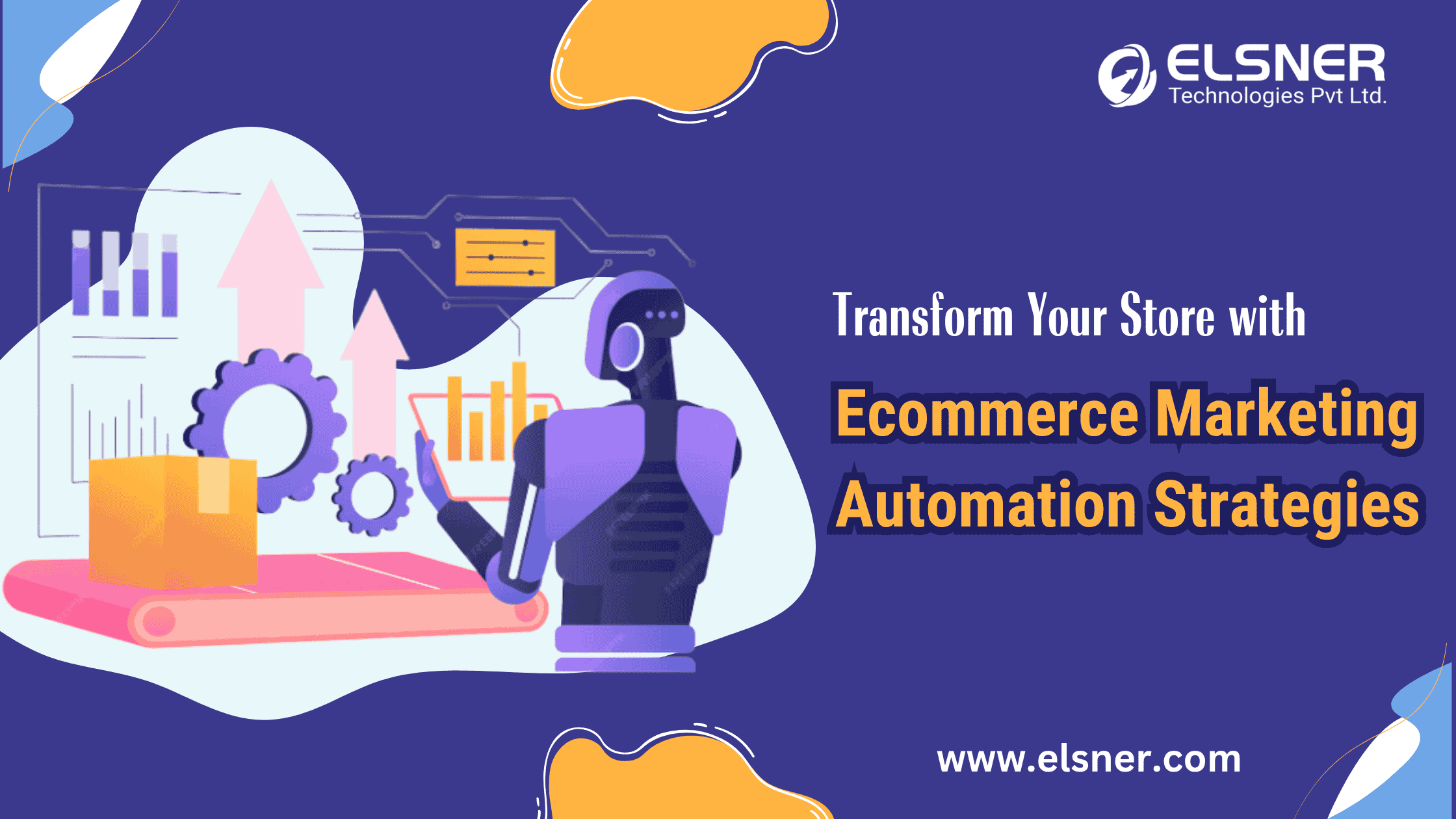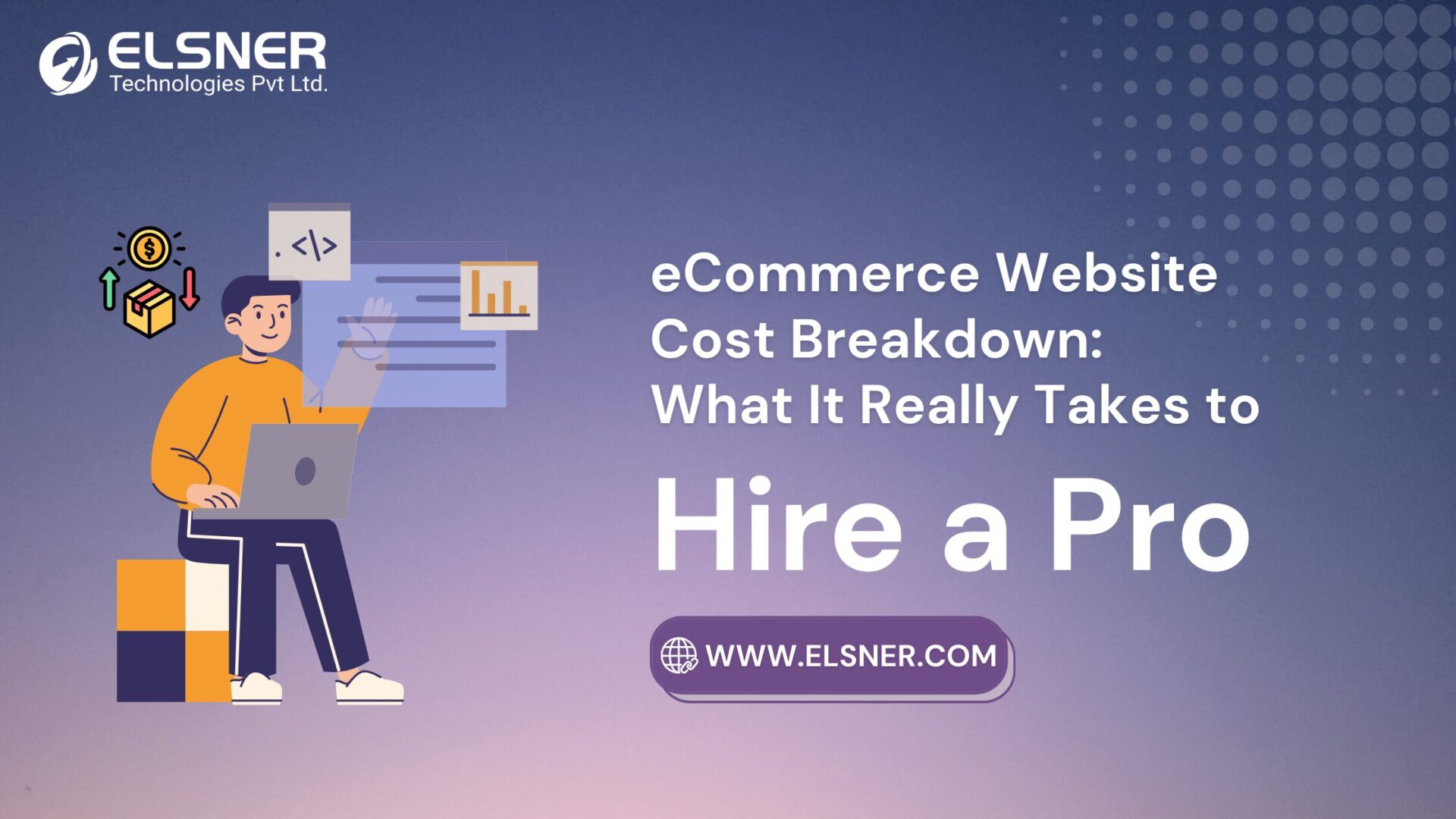- What Are Ecommerce Revenue Streams?
- 6 Proven Revenue Models in Ecommerce
- 1. Sales Revenue Model
- 2. Advertising Revenue Model
- 3. Subscription Revenue Model
- 4. Transaction Fee Revenue Model
- 5. Affiliate Revenue Model
- 6. Agency Revenue Model
- 7 Unique Strategies to Boost Ecommerce Revenue Streams
- Why Understanding Your E-Business Revenue Models Matters
- Critical Ecommerce Revenue Statistics for 2025
- Key Takeaways: Ecommerce Revenue Models Comparison
- 7 Effective Strategies to Boost Your Ecommerce Revenue Streams in 2025
- 1. Make Your Store Mobile-Friendly
- 2. Use High-Quality Product Photos
- 3. Add Social Proof via Customer Reviews
- 4. Keep Your Website Speed High
- 5. Offer Exciting Discounts and Promotions
- 6. Provide Multiple Payment Options
- 7. Add Free Shipping to Attract Buyers
- Common Types of Ecommerce Business Models
- 1. B2C (Business-to-Consumer)
- 2. C2C (Consumer-to-Consumer)
- 3. C2B (Consumer-to-Business)
- 4. B2G (Business-to-Government)
- Frequently Asked Questions (FAQs)
- Q1: How can I increase my ecommerce store revenue?
- Q3: What strategies help increase ecommerce profits?
- Q6: How important is mobile optimization for ecommerce success?
- Q8: What payment methods should I prioritize adding?
- Q9: How can free shipping affect my ecommerce conversions?
- Q10: What role does website speed play in ecommerce revenue?
- Wrapping Up
The ecommerce industry is booming, offering e-commerce revenue streams that can transform how businesses grow and profit online. Selecting the right ecommerce revenue model is crucial to scaling effectively and sustaining long-term success. This comprehensive guide explores the best revenue models in e-commerce for 2025, paired with seven actionable strategies to boost your online earnings while maintaining natural, engaging content optimized for organic SEO traffic, large language models (LLMs).
What Are Ecommerce Revenue Streams?
E-commerce revenue streams represent the different methods ecommerce businesses use to generate income online. Diversifying these streams helps reduce risks and capitalize on multiple monetization opportunities. Popular streams include direct product sales, subscription fees, advertising revenue, transaction commissions, affiliate marketing, and service-based income.Diversifying your approach with multiple e-business revenue models strengthens your growth potential by creating stable and varied income flows. Businesses can combine revenue methods to match their niche, customer preferences, and growth phases.
6 Proven Revenue Models in Ecommerce
Below are the six most effective and widely used revenue models in e-commerce in 2025, complete with explanation, examples, and benefits.
1. Sales Revenue Model
The classical and most straightforward revenue model of e-commerce involves selling physical or digital products directly to consumers. This model generates revenue by the direct sale of goods or services, bypassing intermediaries to enhance margins and build customer loyalty. It is widely adopted by ecommerce platforms such as Amazon and countless Shopify stores worldwide.
- How it Works: Customers pay for products via your online storefront.
- Examples: Amazon, Shopify merchants, and software vendors distributing digital products.
- Benefits: Full control over pricing, branding, and customer experience. Scales well with growing inventory and marketing efforts.
- Challenges: Requires inventory management, fulfillment logistics, and strong marketing to drive traffic.
2. Advertising Revenue Model
Ecommerce websites with significant traffic can earn revenue by displaying advertisements for other companies. Earnings come mostly through cost-per-click (CPC), cost-per-impression (CPM), or pay-per-action models.
- How it Works: You display ads on your platform and earn revenue based on user interactions (clicks or views).
- Examples: High-traffic ecommerce websites, niche marketplaces, and content-driven platforms.
- Benefits: Generates supplemental income without inventory or product sales.
- Challenges: Requires substantial site traffic and user engagement to attract advertisers.
3. Subscription Revenue Model
Recurring revenue through subscription is a growing model where customers pay regular fees to access products or services. This model builds steady income and fosters customer loyalty.
- How it Works: Customers subscribe monthly or annually for curated products or software.
- Examples: Netflix, Spotify, subscription boxes like Hello Fresh.
- Benefits: Stable, predictable revenue and enhanced customer lifetime value.
- Challenges: Requires continuous value delivery and customer retention efforts.
4. Transaction Fee Revenue Model
Marketplaces and platforms implementing this model earn revenue by charging fees or commissions on transactions between buyers and sellers.
- How it Works: Each sale on the platform incurs a percentage-based or fixed fee.
- Examples: eBay, Etsy, Amazon Marketplace.
- Benefits: Revenue scales with transaction volume; multiple earning channels are possible.
- Challenges: Success depends on platform loyalty, trust, and the volume of buyers and sellers.
5. Affiliate Revenue Model
This model earns commissions by promoting and driving sales for other companies via affiliate links embedded in your platform, blog, or social channels.
- How it Works: You earn a commission each time a sale is generated through your affiliate link.
- Examples: Influencers, bloggers, and affiliate marketers using programs like Amazon Associates.
- Benefits: Low operational cost, no need to hold inventory.
- Challenges: Revenue depends on traffic volume and conversion success; requires effective marketing.
6. Agency Revenue Model
Ecommerce agencies specialize in delivering services such as marketing, design, development, or consulting to ecommerce brands, generating revenue from project fees and retainers.
- How it Works: Service-based contracts for ecommerce growth, development, or marketing.
- Examples: Ecommerce marketing agencies, web development firms.
- Benefits: Stable B2B income, repeat clients, and scalable project-based revenue.
- Challenges: Requires continuous client acquisition and a skilled workforce.
7 Unique Strategies to Boost Ecommerce Revenue Streams
To maximize your ecommerce revenue streams, here are seven proven approaches to increase conversions, enhance customer loyalty, and boost overall sales:
- Make Your Store Mobile-Friendly
With over 6.9 billion smartphone users globally and mobile expected to account for nearly 50% of US ecommerce sales by 2027, optimizing for mobile shoppers is non-negotiable. - Use High-Quality Product Photos
Visuals influence purchase decisions significantly. High-resolution images with clean backgrounds improve trust and engagement. - Add Social Proof
Displaying customer reviews, testimonials, and user-generated content improves credibility and boosts buying confidence. - Keep Website Speed High
Since 40% of shoppers leave sites loading slower than 3 seconds, performance optimization is key for retention and conversions. - Offer Exciting Discounts and Promotions
Limited-time offers, bundle deals, and loyalty rewards can increase sales by up to 73%, driving urgency and repeat purchases. - Provide Multiple Payment Options
Supporting popular payment methods like PayPal, Apple Pay, Amazon Pay, and cash on delivery caters to varied preferences, reducing cart abandonment. - Add Free Shipping Incentives
Free shipping attracts 90% of shoppers and increases average order sizes significantly by reducing friction at checkout.
Why Understanding Your E-Business Revenue Models Matters
Choosing the right e-business revenue models directly influences your operational focus, marketing tactics, and customer engagement. A well-aligned revenue model sharpens product offerings, pricing strategies, and customer retention plans.For example, subscription models stabilize cash flow and build lifetime value, while affiliate models expand reach without inventory overhead. Successful ecommerce players often blend several revenue models to create resilient income ecosystems.
Critical Ecommerce Revenue Statistics for 2025
- Projected global ecommerce sales are set to hit $6.88 trillion by the end of 2025.
- The number of active ecommerce stores worldwide has reached 28 million, a 27% increase from pre-pandemic levels.
- Ecommerce now accounts for more than 21% of all retail sales globally, expected to rise to 22.6% by 2027.
- Mobile commerce in the US alone is expected to generate $710 billion in sales in 2025, quadrupling since 2019.
These statistics highlight immense growth potential and the importance of carefully selecting an effective revenue model of e-commerce to harness emerging market opportunities.
Key Takeaways: Ecommerce Revenue Models Comparison
| Revenue Model | Description | Notable Examples |
| Sales | Direct sales of goods/services to consumers | Amazon, individual Shopify stores |
| Advertising | Monetizing site traffic with display ads | Popular ecommerce blogs, marketplaces |
| Subscription | Recurring fees for ongoing access | Netflix, Spotify, Hello Fresh |
| Transaction Fee | Commission on marketplace transactions | eBay, Amazon Marketplace |
| Affiliate | Commission based on driving sales for third parties | Influencers, affiliate marketers |
| Agency | Service-based model offering consulting, design, and marketing | Ecommerce marketing and design agencies |
7 Effective Strategies to Boost Your Ecommerce Revenue Streams in 2025
Growing your e-commerce revenue streams is essential to scaling your online business successfully. Implementing practical strategies not only increases sales but also improves customer loyalty and boosts overall profitability. Let’s explore seven powerful ways to enhance your ecommerce store performance with e-commerce development services:
1. Make Your Store Mobile-Friendly
With over 6.92 billion smartphone users worldwide and nearly 45% of shoppers preferring mobile devices for online purchases, having a mobile-optimized ecommerce site is no longer optional—it’s essential. A mobile-friendly ecommerce store ensures seamless navigation and fast checkout on any device, giving potential customers a smooth shopping experience wherever they are. Stores that fail to optimize for mobile risk are losing valuable traffic and falling behind competitors.Tip: Use responsive design and regularly test your site on multiple devices to maintain speed and usability.
2. Use High-Quality Product Photos
Customers heavily rely on visuals to make buying decisions. Studies show online shoppers are more likely to purchase if the product images are clear, professional, and showcase the item attractively. Using high-resolution photos with clean, white backgrounds helps keep the focus on the product and conveys a sense of quality and trust.Tip: Include multiple angles and zoom features to simulate an in-store experience, reducing purchase hesitation.
3. Add Social Proof via Customer Reviews
An overwhelming 88% of consumers trust online reviews as much as personal recommendations. Displaying authentic positive customer reviews on your product pages builds credibility and brand trust, directly influencing purchase decisions. Engage your audience by collecting reviews through follow-up emails or post-purchase surveys and highlight these testimonials strategically.Tip: Incorporate star ratings and user-generated images to enhance the authenticity of your social proof.
4. Keep Your Website Speed High
Speed matters tremendously. Research indicates that 40% of visitors abandon websites that take more than three seconds to load. A fast-loading ecommerce site enhances user experience, reduces bounce rates, and boosts conversions. Optimizing images, leveraging caching, and using reliable hosting solutions are crucial to maintain optimal site performance.Tip: Use tools like Google PageSpeed Insights to regularly monitor and improve your site speed.
5. Offer Exciting Discounts and Promotions
Offering well-planned discounts can increase ecommerce sales by up to 73%. Limited-time offers, buy-one-get-one (BOGO) deals, seasonal sales, and loyalty rewards create urgency, encouraging customers to buy more and return frequently. However, it’s important to maintain healthy profit margins while running discounts to sustain business growth.Tip: Use targeted discounts to upsell related products and increase average order value.
6. Provide Multiple Payment Options
Customers expect flexibility in payment methods. Integrating diverse and secure payment gateways such as PayPal, Apple Pay, Amazon Pay, credit/debit cards, and cash on delivery (COD) reduces cart abandonment and expands your customer base. Collaborate with experienced ecommerce development services to implement smooth, secure, and user-friendly payment systems.Tip: Display payment option logos prominently to reassure shoppers during checkout.
7. Add Free Shipping to Attract Buyers
Free shipping is a proven conversion booster, with 90% of online shoppers saying it encourages more frequent purchases. Offering free shipping—whether site-wide or above a minimum order threshold—reduces friction at checkout and can significantly lower cart abandonment rates. It can also increase your average order size as customers add more items to qualify.Tip: Clearly communicate free shipping eligibility across your site to motivate larger orders.
Common Types of Ecommerce Business Models
Understanding which ecommerce business model aligns with your operation can further optimize your ecommerce revenue model choice:
1. B2C (Business-to-Consumer)
The classic retail model is where businesses sell products directly to end consumers. Globally, many online stores operate under this model, with brands like WOW and MamaEarth as prime B2C examples.
2. C2C (Consumer-to-Consumer)
In this model, individuals sell products to other consumers often via a third-party platform that charges commissions or fees. Etsy and eBay are leading examples, enabling peer-to-peer sales effectively.
3. C2B (Consumer-to-Business)
Here, individuals sell products or services to businesses. Freelance platforms like Fiverr and Upwork exemplify this by connecting independent professionals with companies seeking their services.
4. B2G (Business-to-Government)
Companies sell goods or services to government entities. For example, suppliers like CG Global provide equipment to government power agencies, reflecting this model.
Frequently Asked Questions (FAQs)
Q1: How can I increase my ecommerce store revenue?
Boost revenue by driving traffic, offering attractive discounts, providing multiple payment options, and ensuring a smooth checkout experience.
Q2: What is a good profit margin for ecommerce?
Generally, healthy ecommerce businesses aim for profit margins between 40% and 70%.
Q3: What strategies help increase ecommerce profits?
Focus on optimizing operational costs, reducing return rates, improving supply chain management, and upselling/cross-selling to customers.
Q4: Are discounts sustainable for long-term revenue growth?
While useful for short-term sales spikes, heavy discounting in the long term can erode margins. Balance discounts with value-added services.
Q5: How is ecommerce revenue calculated?
The formula is: Ecommerce Revenue = Traffic × Conversion Rate × Average Order Value × Purchase Frequency.
Q6: How important is mobile optimization for ecommerce success?
Mobile optimization is critical given widespread smartphone usage, influencing user experience, SEO rankings, and conversion rates.Q7: Can customer reviews really impact sales volume?Yes, positive reviews significantly increase trust, reduce purchase hesitation, and can boost conversions by up to 270%.
Q8: What payment methods should I prioritize adding?
Include popular and trusted options like PayPal, major credit/debit cards, digital wallets, and cash on delivery based on your target market.
Q9: How can free shipping affect my ecommerce conversions?
Free shipping reduces cart abandonment and encourages larger orders, increasing overall sales volume.
Q10: What role does website speed play in ecommerce revenue?
Faster websites improve user experience, increase conversion rates, and positively impact search engine rankings.
Wrapping Up
The ecommerce industry offers diverse opportunities for business owners to increase e-commerce revenue streams strategically. By focusing on these tested strategies—mobile optimization, high-quality visuals, social proof, site speed, thoughtful discounts, flexible payments, and enticing free shipping—you are well-equipped to grow your store’s revenue sustainably.Ready to boost your ecommerce growth? Consider partnering with skilled ecommerce developers who can implement these strategies and tailor your store for maximum profitability.Explore professional ecommerce development services and turn your ecommerce vision into reality today!

About Author
Dipak Patil - Delivery Head & Partner Manager
Dipak is known for his ability to seamlessly manage and deliver top-notch projects. With a strong emphasis on quality and customer satisfaction, he has built a reputation for fostering strong client relationships. His leadership and dedication have been instrumental in guiding teams towards success, ensuring timely and effective delivery of services.




